Nepal is one of the most fantastic destinations in the world for the best trekking experience. It is surrounded by breathtaking, unusual landscapes, home to many of the highest Himalayas, and has a varied culture. Nepal's landform is trapezoidal, measuring roughly 800 km in length from east to west and 200 km in width from north to south. Its unique topography contributes to its lovely Himalayan atmosphere and rich cultural heritage, which drags wanderers from around the globe every year.
Treks in Nepal lets trekkers enjoy every aspect of fantastic destinations. Indeed, there are various adventure choices, whether challenging journeys or beginner-friendly trips. However, Nepal has a lot to offer regarding trekking around the Himalayas. In this article, we have discussed which could be the best treks in Nepal for your following adventure holidays.
Are you up for some thrilling adventure, hike, or trekking journey in Nepal? We, the Escape Himalaya, present you with the best 15 trekking destinations in Nepal, detailing the most famous trekking itineraries for you to pick. From short hikes and beginner-friendly to long and challenging trips, we have covered it all.
Book your preferred best trekking route for 2025/26.
Everest Base Camp Trek, the world's best trek
Majestic Himalayan Odyssey | Duration: 12-16 Days | Location: Sagarmatha National Park, Nepal | Moderate - Strenuous| Max. 5,545 meters | Teahouses/Guesthouse | March-May/Sept-Dec
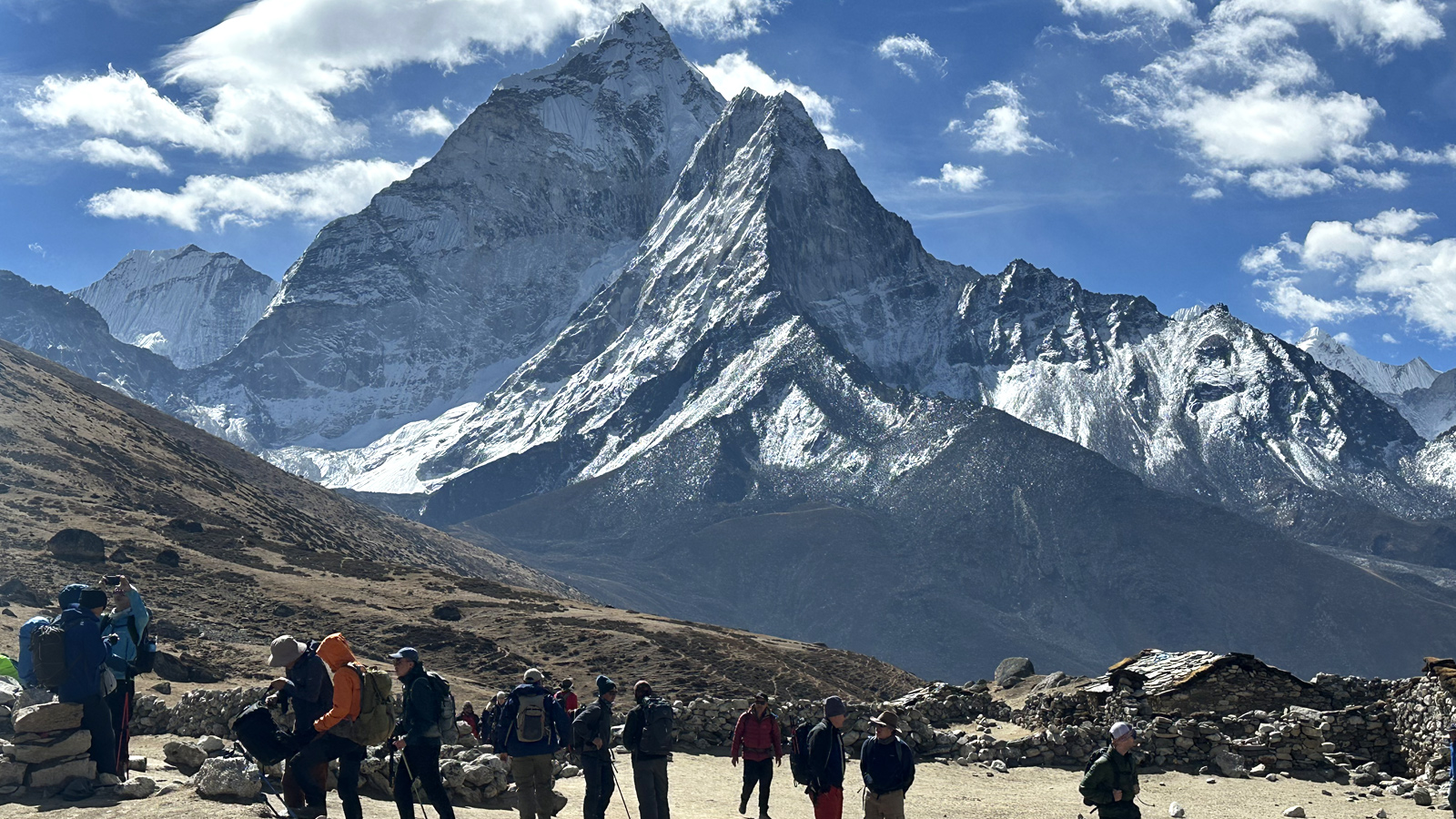
Nepal's most well-traveled hiking path is the Everest Base Camp route. Within the Everest Base Camp Trek, travelers can visit the stunning Khumbu region, home to the majestic Mount Everest. Hiking to Everest's base camp is a fantastic way to see the magnificent Everest Peak and learn about Sherpa culture. The route passes via the valleys of the Dudh Koshi and Imja rivers.
In contrast, it includes many popular destinations like Namche Bazaar, Tengboche, Dingboche, and Gorakshep. The Kalapatthar's magisterial beauty shows the panoramic beauty of the majestic Mt. Everest. A legendary 14-day Everest Base Camp Trek takes travelers hiking through Sagarmatha National Park- a UNESCO Natural World Heritage Site. Likewise, the trail follows the Dudh Koshi River and alpine forests to the glacial valley of Gorakshep, which holds incredible sights of the Everest Himalayas. There are skylining peaks like beautiful Ama Dablam, Lhotse, Nuptse, Khumbutse, Kongdi Ri, Kusum Kanguru, Thamserku, and many more.
Furthermore, the terrain consists of alpine woodlands and emerald pastures that trekkers go through. Along the way, trekkers can see rich Sherpa Buddhist cultural practices. Their culture weaves its threads into the landscape in the form of monasteries, Gumbas, and Mani stone walls. They are all carved with Buddhist prayers mounted with prayer flags. Many more distinctive attributes make the EBC Trek one of the best trekking in Nepal.
Best Features
- Kala Patthar stands as the highest point of the trek (5,545m) which gives trekkers the exceptional opportunity to see Mount Everest together with its neighboring peaks.
- The Himalayas expose their natural magnificence through a combination of various mountainous features that include glacial moraines and valleys alongside alpine meadows and high-altitude rocky zones.
- Namche Bazaar operates as the Sherpa town of Everest at 3,440m above sea level while serving travelers through its important acclimation spot and cultural destination.
- Visitors can experience spiritual and spectacular surroundings at Tengboche Monastery which stands as the biggest gompa in the Khumbu area.
- Throughout the trekking trail, you will see spectacular views of Everest (8,848m) and Lhotse and Makalu and Cho Oyu peaks yet each view of these snow-capped peaks changes moment by moment.
- This trek contains Buddhist monuments that share the Sherpa cultural heritage while using prayer flags and traditional stone carving walls around this sacred territory.
Review of Everest Base Camp Trek | Amazing Trek to EBC with this Group!
Raj with Escape Himalaya is hands down the best guide for any trek in the Himalayas! We did a private EBC trek (November) and had an absolutely amazing time. Throughout the duration of the trek Raj, and both our porters, Depak and Khud, did an excellent job of keeping us safe along the way.
By Ms. Caitlin D Read More
Annapurna Base Camp Trek
Sanctuary of Solitude | Duration: 8-14 Days | Location: Annapurna Conservation Area | Moderate | Max. 4,130 meters | Guesthouses | March-May/Sept-Dec
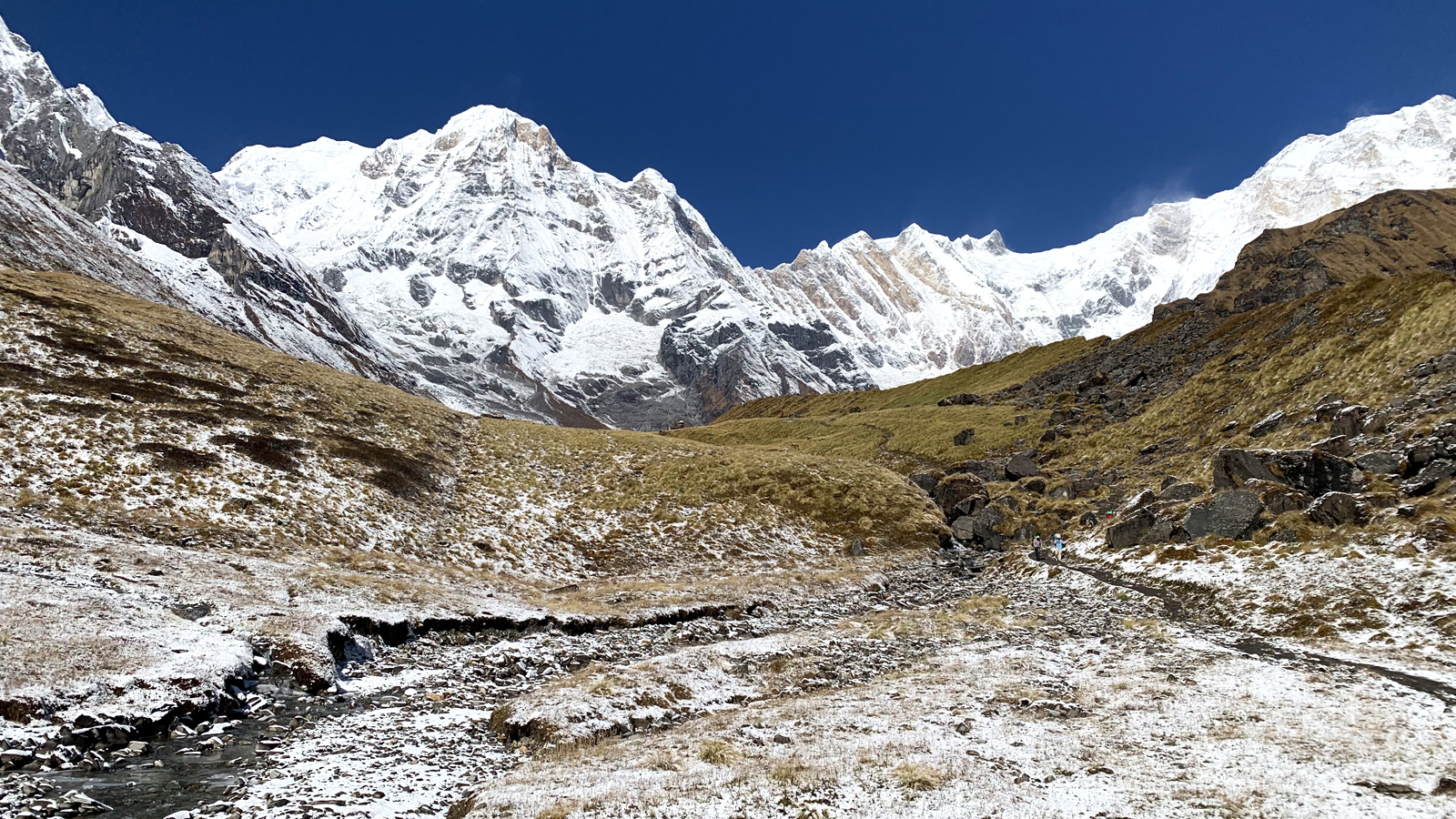
Trekking to the Annapurna Base Camp is one of Nepal's most popular journeys. It's a trip that's naturally uplifting and rich in cultural diversity. On this route, trekkers can pass through numerous ethnic Rai and Limbu communities in the Annapurna region. Throughout the journey, the Annapurna Massif (I, II, III), Machhapuchhre, Dhaulagiri, and Gangapurna loom majestically over the trail for the party. Furthermore, the natural aspects of the Annapurna base camp trip are a unique highlight.
The journey goes through the most diverse region of Nepal. It presents trekkers with mesmerizing acreages of thick chartreuse woodlands and forests. Trekkers catch rare glimpses of wildlife like Himalayan Monal and Musk Deer as they hike ahead—another unique hallmark of the Annapurna Base Camp Trek. Annapurna Base Camp Short Trek is Pokhara City- the tourist hub of Nepal. Pokhara is where the trekking journey starts. Pokhara is a lovely city near the Annapurna Himalayas with pristine Phewa Lake. Trekkers can hike to Poon Hill to view Mt. Annapurna and Dhaulagiri in full bloom.
Key Highlights
- Spectacular close-up views of Annapurna I, South, and Hiunchuli.
- Awe-inspiring sights of the sacred Machapuchare (Fishtail) Mountain.
- Walk through vibrant rhododendron forests in full bloom.
- Explore traditional Gurung and Magar villages like Ghandruk and Chhomrong.
- Cross thrilling suspension bridges over fast-flowing rivers.
- Capture incredible photos of glaciers, moraines, and towering peaks.
Recent Review of Annapurna Base Camp Trek | Amazing Annapurna Trip
I had a great Annapurna Base Camp trek with Raj! He was so informative and really took care of us. From food recommendations at each accommodation to making sure we were all feeling healthy etc Raj went above and beyond as our guide. He is super knowledgeable and experienced in the mountains.
By Ms. Jillian, Read More
Annapurna Circuit Trek, the best of classic treks in Nepal
The Pinnacle of Classic Himalayan Trip | Annapurna Region, Nepal | Duration: 14-20 Days | Moderate | Max. 5,416 meters | Teahouses | March-May/Sept-Dec.
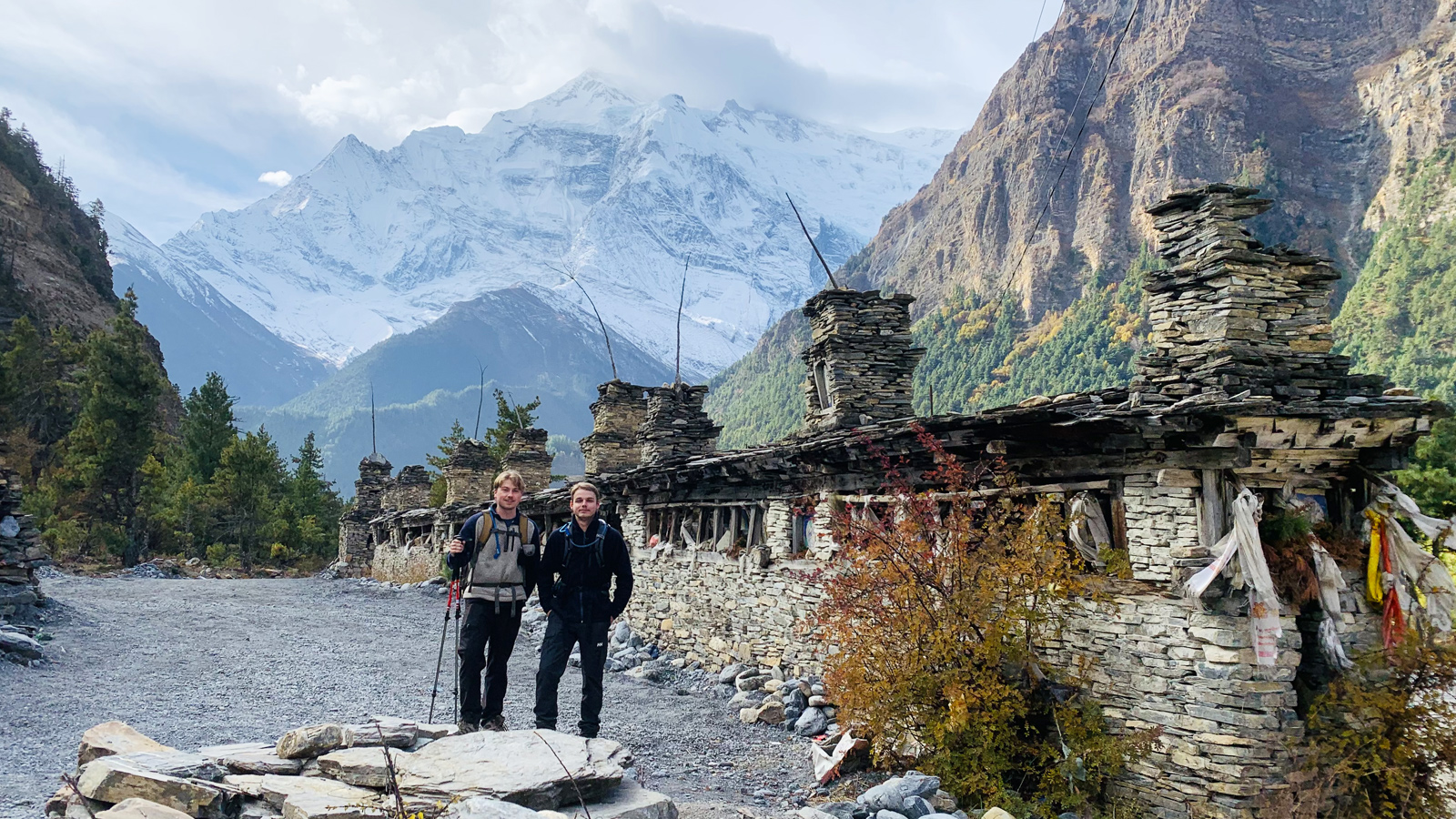
The Annapurna Circuit Trek is one of Nepal's most popular classic treks. It lets trekkers circumambulate the Annapurna range and important Kali Gandaki River Valley destinations. The journey is an exemplary adventure, including crossing Thorong La Pass (5,416m), the highest mountain pass in the world in the Annapurna region.
Further, phenomenal peaks like the Annapurna (I, II, III), Gangapurna, Machhapuchhre, Dhaulagiri, and Manaslu provide impressive company along the trail. Trekkers make their way through the beautiful Marshyangdi Valley, experiencing the ethnic Limbu and Chhetri cultures of the local people. The trek is stunning, with beautiful paddy fields, subtropical frets, waterfalls, and gigantic cliffs flanking the gorges and villages. That is why it is almost always mentioned while discussing Nepal's best scenic treks.
Annapurna Circuit presents a cornucopia of climatic variations and diverse terrains with distinct cultural ethos. Hindu villages lie in the lower Himalayan foothills, while Tibetan culture dominates in the Manang and Mustang valleys. The trek also crosses the Annapurna Sanctuary, which presents some of Nepal's most magical natural terrains.
Key Highlights
- Spectacular views of the Annapurna and Dhaulagiri mountain ranges throughout the trek.
- Cross the iconic Thorong La Pass (5,416 meters), one of the highest trekking passes in the world.
- Explore traditional villages, such as Manang and Pisang, rich in local culture and hospitality.
- Trek through picturesque terraced fields, blooming rhododendron forests, and dense pine woods.
- Relax in the natural hot springs at Tatopani, a perfect spot for post-trek relaxation.
- Encounter diverse wildlife, including musk deer and various bird species
Langtang Valley Trek
Where Quiet Trails Reveal the Soul of the Himalayas | Langtang Region, Nepal | 6-10 Days | Moderate | Max 5,050 | Teahouses | March-May & Sept-Dec
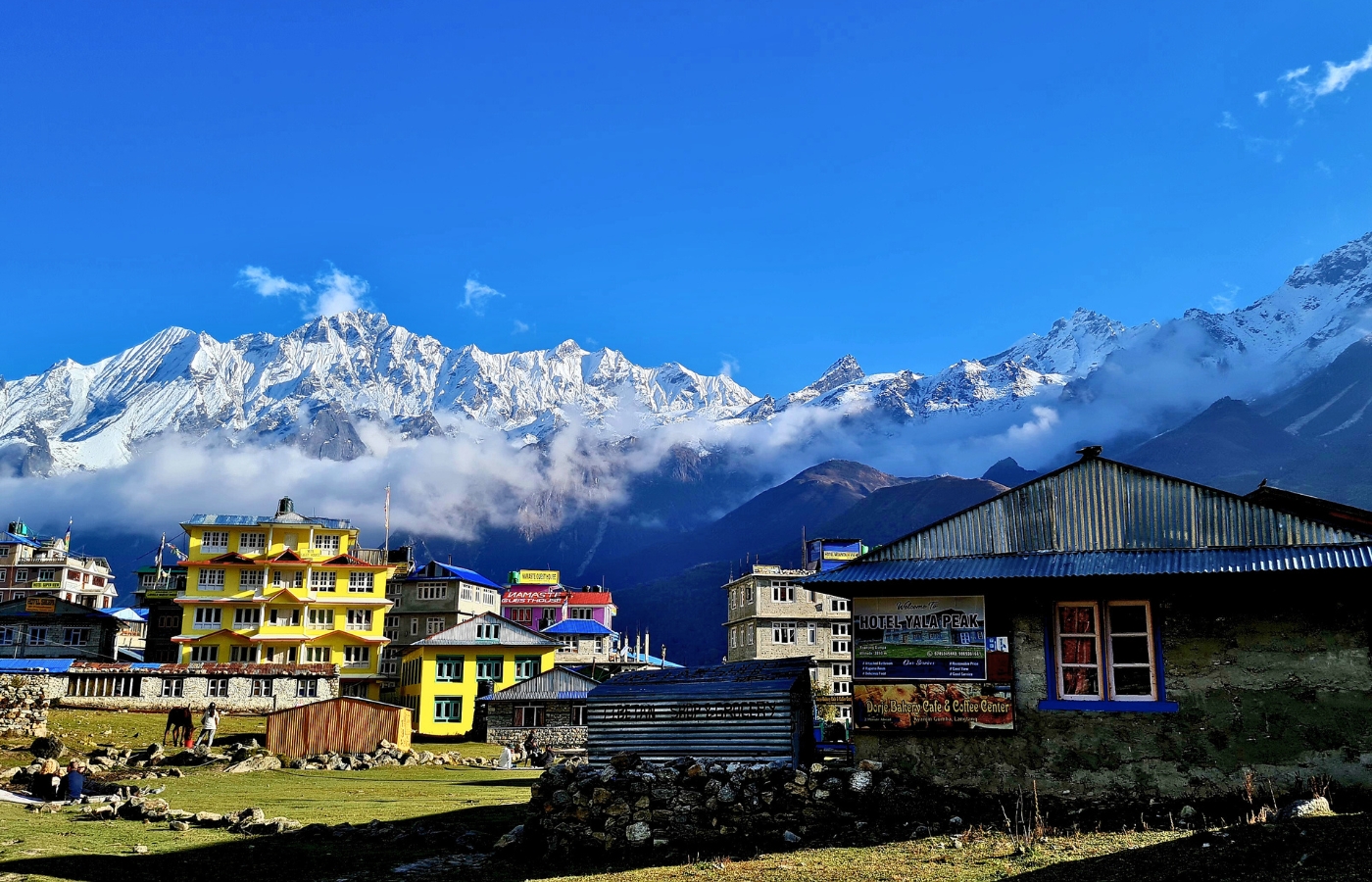
Langtang valley offers trekkers the best Himalayan views of the northern side of Nepal. Langtang Trek is one of the shortest from Kathmandu. The valley's many glacial lakes have made it one of the best regions for flourishing wildlife. Likewise, visitors can enjoy hiking through the landscape ornamented with jade-green woods, vast open pastures, and Himalayan meadows. Besides, the trek includes visiting Kyanjin Gompa and the local cheese factory that produces yak milk cheese.
Key Highlights
- The trek takes one to the Langtang National Park (Nepal’s first Himalayan National Park), which is a biodiversity hotspot with various landscapes.
- It offers stunning mountain views of snow-covered peaks and magnificent glacier scenery.
- Visit the yak cheese factory in Kyanjin Gompa and see the traditional cheese-making process.
Review of Langtang Valley Trek | Trekking to Langtang Valley
I will highly recommend this company to anyone who wishes to trek hike in Nepal. They are simply amazing in organizing everything from airport pickup to full trekking arrangements. All I had to do was bring myself to Kathmandu; the rest was a smooth sail.
By Mr. Vivek S, Read more
Manaslu Circuit Trek
Sacred Himalayan Passage | Manaslu Region, Nepal | Duration: 14-15 Days | Moderate | Max. 5,106 meters | Teahouses | March-May/Sept-Dec.
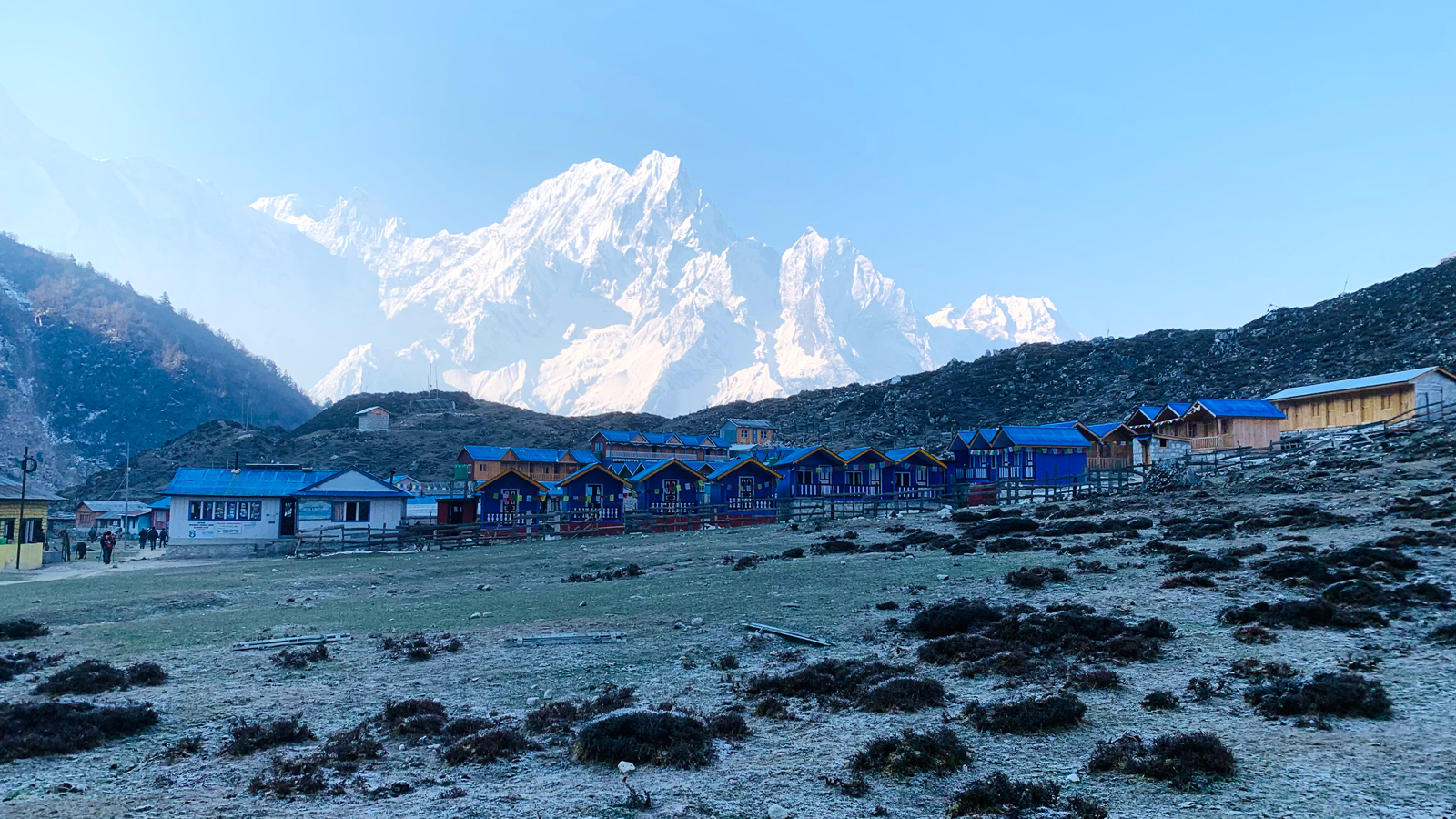
One of the spell-bounding off-beaten-path treks in Nepal, the Manaslu Circuit, is a perfect option for trekkers looking for untouched remote journeys with fewer crowds. The trail passes through the Manaslu Conservation Area, the natural habitat for many endangered Himalayan flora and fauna species.
The journey to Manaslu involves visiting the hidden gem of Nepal—Manaslu. Indeed, trekkers can experience the region's distinct cultural features, which are unique to others. The people have their customs and speak a dialect that is not found anywhere else. Trekking in the Manaslu region started just in 2008. The area fosters striking Manaslu Range, Ganesh Himal, Shringi Himal, and the Baudha Himal Range.
However, the Manaslu circuit expedition presents rich natural beauty and cultural penchant. Having a long history of Buddhism, the Manaslu Circuit Trek offers trekkers culturally distinct remnants of an ancient kingdom whose attributes are still alive today. People believe that the Buddhist Saint Milarepa meditated in the caves of Mt. Manaslu, which gives the trekking journey a serene spiritual ambiance.
Top Features
- A challenging glacial crossing at Larke Pass (5,160m) represents the trek's most demanding ascent, offering magnificent views of Himlung Himal, Cheo Himal, along Annapurna II.
- Set in unspoiled territory, the journey follows remote trails through pristine forests and powerful river valleys, which make this trail stand as one of Nepal's least frequented wilderness routes.
- The trek leads through genuine Tibetan settlements while passing sacred walls with Buddhist mantras and visiting historic places such as Mu Gompa.
- During the trek, climbers can see Manaslu Peak (8,163m) as it stands alongside glaciers, tall cliffs, and towering Himalayan mountain ranges.
- Travelers pass through multiple climate zones and land types starting in subtropical areas, which transition to alpine plains and mountain deserts within the Manaslu Conservation Area.
Review of Manaslu Circuit Trek | Fun trekking to Manaslu with Escape Himalaya!
My long-awaited dream of visiting Nepal and its mountains was finally real when I contacted Escape Himalaya for Manaslu Circuit Trek. I believed it was one of the best options for treks in the country, and when I expressed my views and queries, Escape Himalaya answered them promptly and made all of the arrangements. When I arrived, I was greeted at the airport, and I immediately knew that I was going to be in good hands.
By Mr. Ishikawa, Read the complete review
Upper Mustang Trek
Forbidden Kingdom Expedition | Upper Mustang, Nepal | Duration: 14-18 Days | Moderate | Max. 4,210 meters | Teahouses | March-Nov.
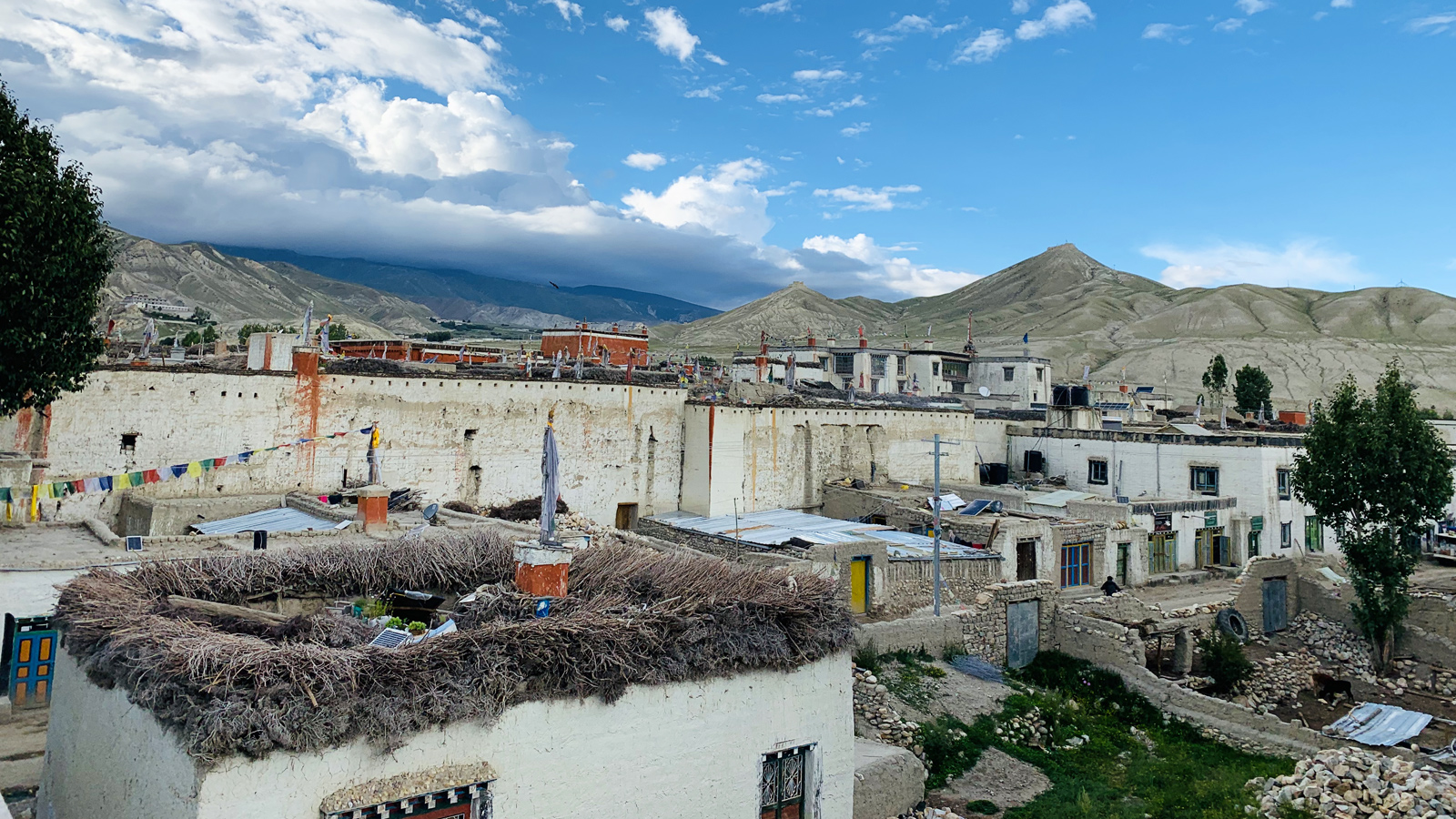
Upper Mustang Trek allows you to enjoy trekking even during the monsoon season. The Upper Mustang region lies in the Annapurna and Dhaulagiri peaks' rain-shadow zone, which experiences significantly less rainfall.
Generally, the geography has an arid desert-like environment that presents some incredible rock formations. It is among the best treks in Nepal because it has a lot to offer its visitors. It is a journey to the Kingdom of Lo, practicing Tibetan-Buddhist culture unique from other parts of Nepal. Upper Mustang is one of the last places on Earth to experience intricate layers of Tibetan Buddhism that have been unchanged for centuries.
Moreover, the trek presents spellbinding hallmarks like the Lo Manthang settlement-the capital of Upper Mustang. The prominent monasteries hold secret scriptures, statues of Buddhist deities, and priceless Thanka paintings. Archeologists discovered many mysterious sky caves over the terrain with decadent high cliffs in National Geographic.
Best Features
- Witness the ancient mythological landscapes as you explore towering red cliffs and hidden cliffside caves, offering insights into Buddhist history and untold traditions dating back thousands of years.
- Visitors to Jomsom & Kagbeni gain access to the hidden Tibetan-Nepali cultural blend by trekking through arid trans-Himalayan valleys and rugged highlands, crossing the Kali Gandaki Gorge - the deepest canyon in the world.
- Travelers can visit Muktinath Temple, a sacred pilgrimage site for both Hindus and Buddhists, where the eternal flame and 108 sacred waterspouts symbolize spiritual liberation and freedom from worldly attachments.
- The rain shadow effect of the Annapurna and Dhaulagiri ranges shields Upper Mustang from monsoon rains, making it one of the few Himalayan trekking destinations accessible year-round.
Mardi Himal Trek
Where unseen trails unveil the majesty of Mountains| Annapurna Region, Nepal | Duration: 5-10 Days | Moderate | Max. 4,200 meters | Teahouses | March-May/Sept-Dec
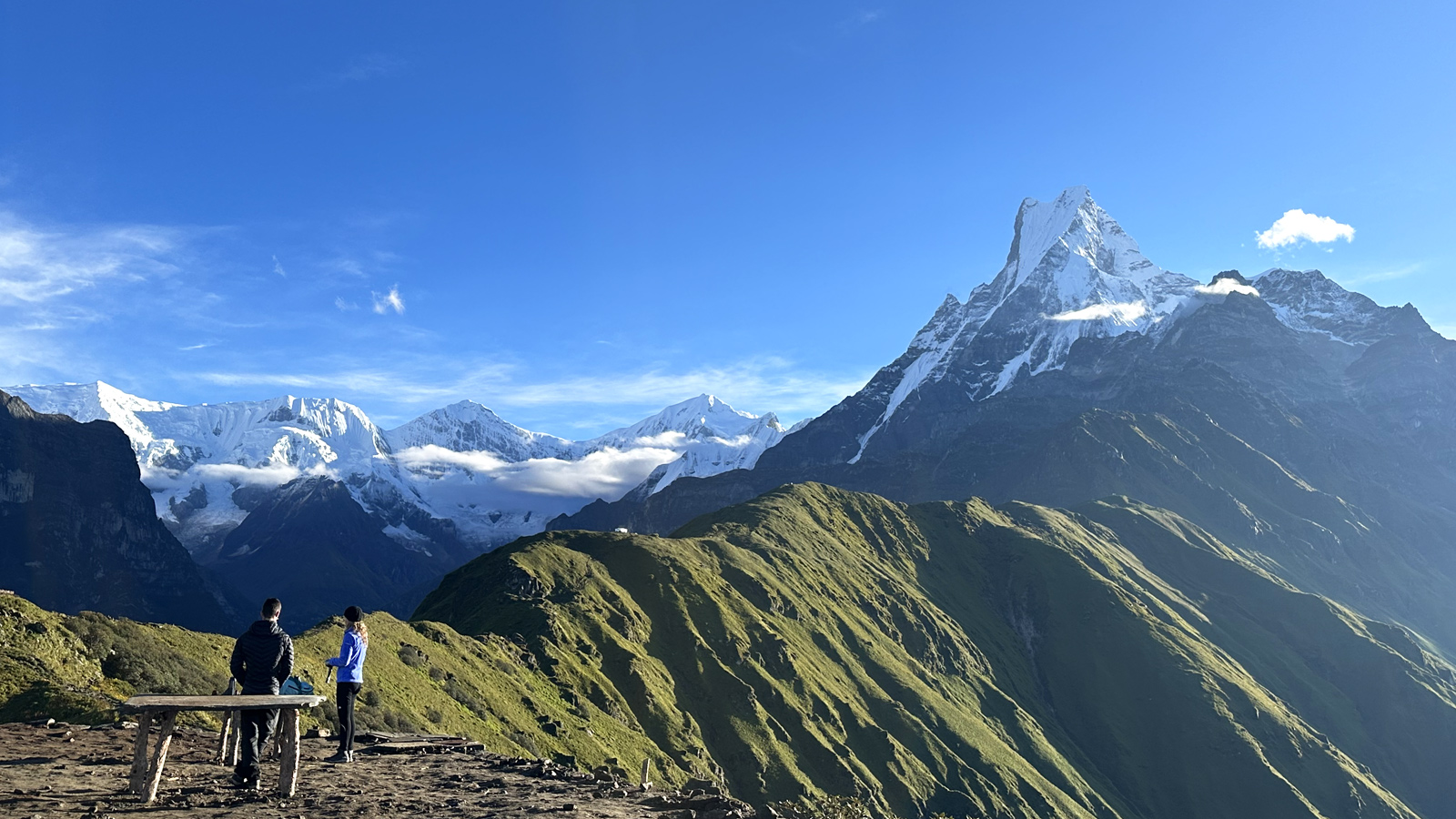
Steadily gaining popularity and mass appeal in recent years, the Mardi Himal Trek is one of the unknown trekking journeys in the Annapurna region. Limited trekkers access it in a short time. The trek presents homely villages with traditional houses flaunting the Annapurna Peaks and the Mardi Himal as their backdrop.
Trek to Mardi Himal is a diverse hike with quaint cultural features and alpine woodlands. The local people still follow the old way of life. In summer, they take their cattle to graze in Himalayan pastures and do terrace wheat and barley farms.
The journey starts from Pokhara City, Nepal's tourist hub. It then follows the path toward prominent destinations like the region's High and Low campgrounds.
Top Highlights
- Stop at three different vantage points, including Low Camp, High Camp, and the Upper Viewpoint, where you can see Annapurna I, Machapuchare, Dhaulagiri, and Manaslu while witnessing spectacular sunrise panoramas.
- You will experience the genuine culture of Gurung and Magar communities by hiking through villages that honor traditional customs while observing traditional hillside farming practices. Locals will welcome you with authentic hospitality.
- The trail travels through various environmental zones ranging from dense rhododendron forests to agricultural fields and meadows, followed by rocky ridges that eventually give way to barren alpine slopes.
- Unlike traditional Annapurna trails, Mardi Himal maintains its remote character with minimal foot traffic, making it ideal for travelers who want to escape the crowds in nature.
- You can experience an authentic trekking experience by staying at traditional teahouses throughout the trail while enjoying smaller-scale tourism than what other trails provide.
Review of Mardi Himal Trekking | Amazing Mardi Trek with Escape Himalaya
We did Mardi Himal Trek with Escape Himalaya Trek. It is genuinely one of the best trekking companies in Nepal. Their services from start to end were always the best. We did use their services two times - previously Everest base camp trekking. Also, the guide was professional and porters were very funny and nice.
By Mr. Mark H, Read More
Everest Base Camp Trek with Gokyo via Cho La Pass
Celestial Himalayan Traverse | Everest Region, Nepal | Duration: 15 - 17 Days | Strenuous | Max. 5,545 meters | Teahouses | March-May/Sept-Dec.
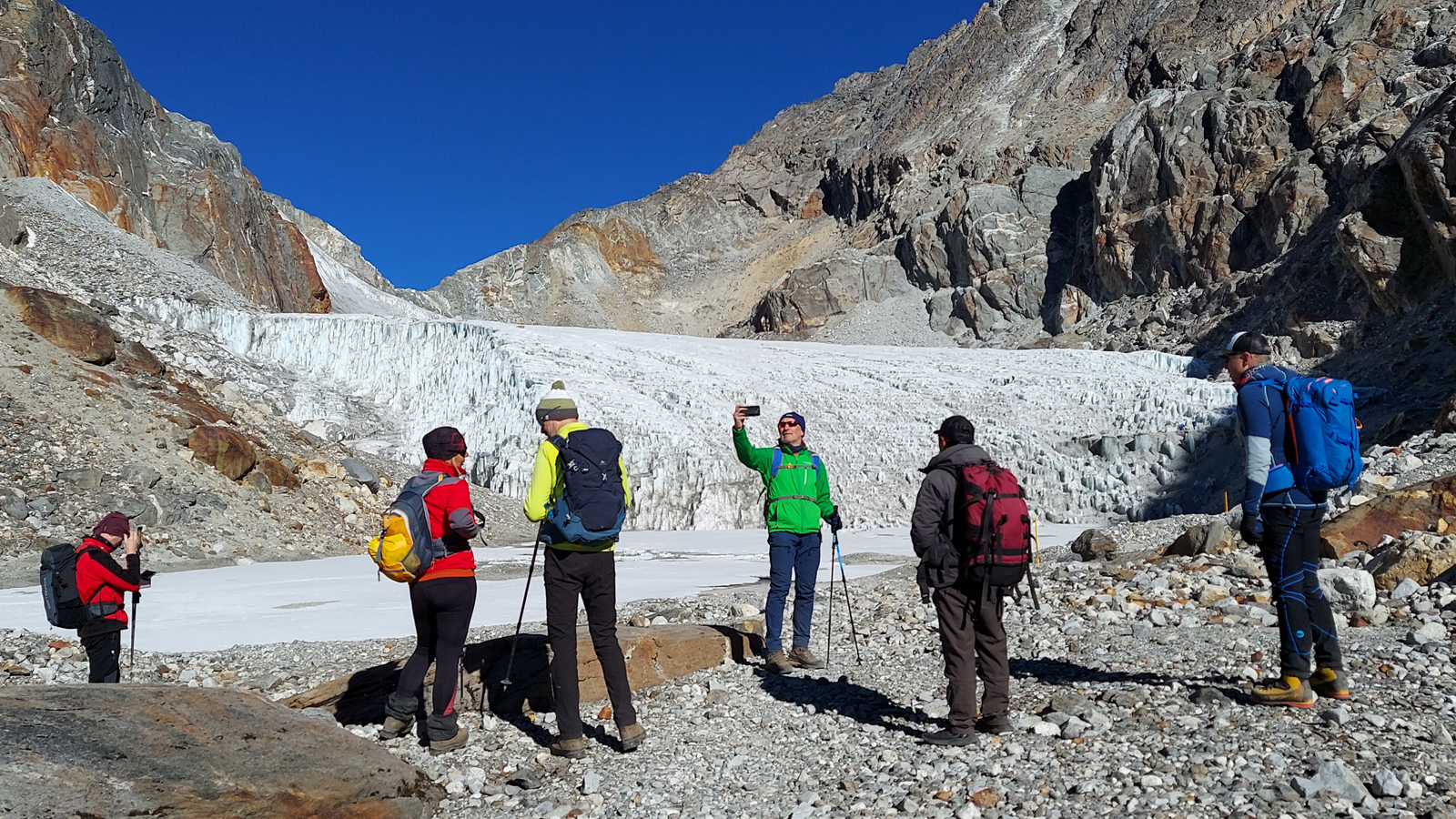
One of the most challenging treks in Nepal is the Everest Base Camp Trek with Gokyo via Cho La Pass. Because it traverses the well-known mountain pass (Cho La - 5,420 m), this trip stands out as one of the top treks in Nepal. The first few journeys of the adventure are a lot like an EBC Trek. Nevertheless, there is a problematic ascent toward Cho La Pass in the journey's second half. One requires good agility as it involves a strenuous hike up and down the mountain terrains. Prior trekking experience will be a great help while doing this trek.
However, the extra effort is worth the trouble. The panoramic views of the Dudh Koshi and Imja Khola valleys from the top of these passes are mesmerizing. The Chola Pass seems to lie above the clouds, feeling like heaven with incredibly hypnotic views. The cloud-laden acreage with views of Everest peaks rises like ivory serrations in the skies. There is nothing quite like it in the world!
Best Highlights
- Two supreme vantage points during this voyage allow travelers to behold Everest at its best: Kala Patthar (5,545m) and Gokyo Ri (5,357m) summits.
- Hike through the world’s highest natural freshwater lakes at Gokyo Lakes while witnessing the Himalayan mountains perfectly reflected in their turquoise waters.
- The challenging Cho La Pass route (5,420m) features icy moraines and rugged ridgelines, which create an enjoyable alpine experience.
- Experiencing both Everest's perilous icefall and Nepal's longest glacier provides visitors with the opportunity to view glacial formations that have persisted throughout thousands of years.
- Witness the vibrant spiritual and cultural heritage of the Khumbu region during your cultural adventure as you explore both Tengboche Monastery and authentic Sherpa villages situated along the journey.
Annapurna Panorama Trek
First light dances on Himalayan spires, morning born in gold | Golden Horizon Trek | Annapurna Region, Nepal | Duration: 7-10 Days | Easy-Moderate | Max. 3,210 meters | Teahouses | March-May/Sept-Dec.
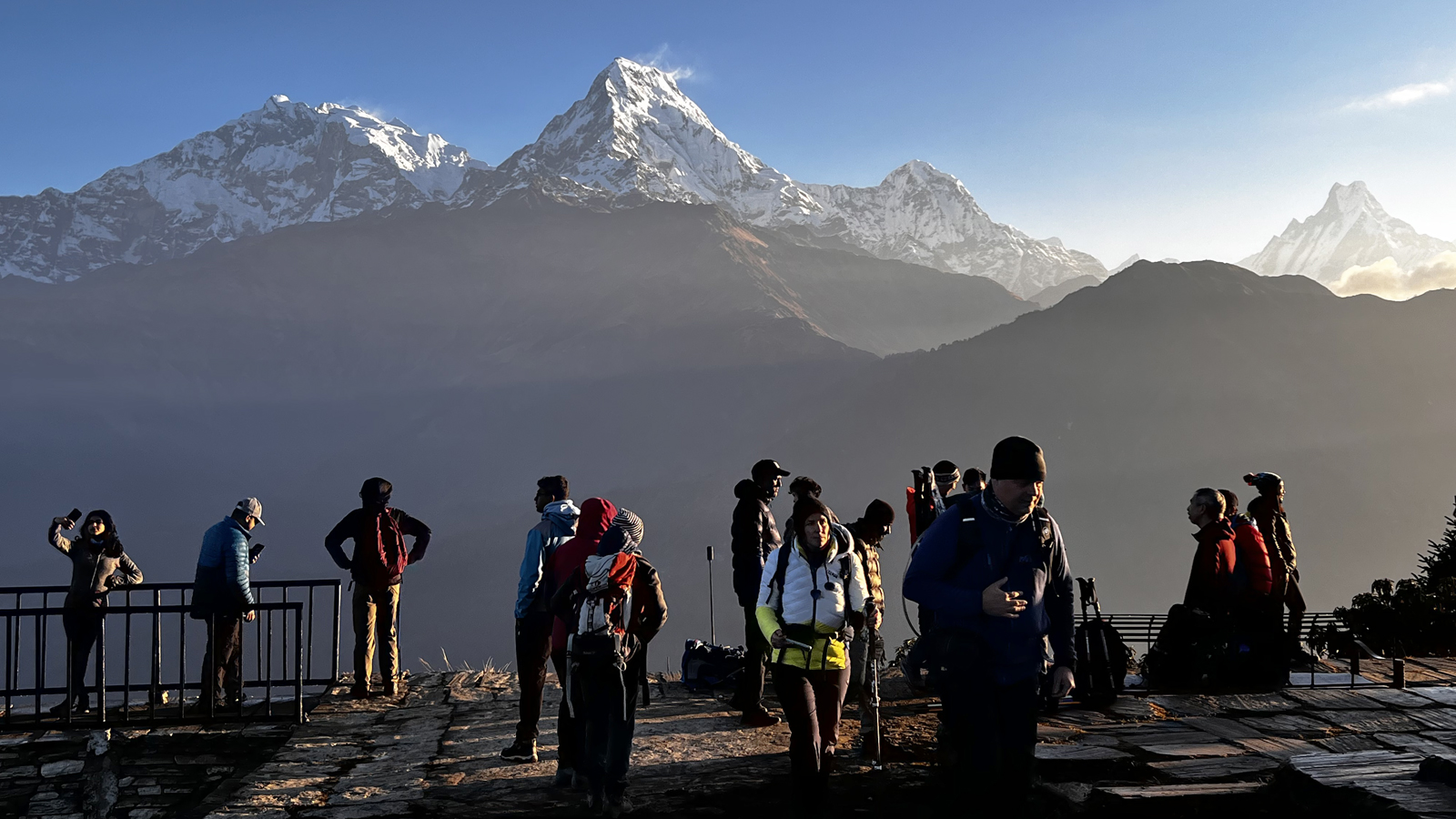
The Annapurna Panorama Trek is one of the best options for people looking to trek in the lowlands of the Annapurna region. It is best for people who do not necessarily want to undergo an extensive trekking journey to experience the Himalayas.
Furthermore, the Annapurna Panorama Poonhill Trek presents panoramic views of the magnificent Annapurna Mountains from the vantage point of Poon Hill. Usually, the trek to Poon Hill from Ghorepani is done early in the morning. The hike before dawn offers a magical moment of the rising sun amidst the striking Annapurna and Dhaulagiri ranges.
Indeed, the glorious sunrise and sunset from Poonhill are phenomenal.
Best Features
- Get perfect panoramic views of the Annapurna and Dhaulagiri mountain ranges.
- Explore Nepal’s largest conservation area and witness rare species like Himalayan Black Bear, red panda, and musk deer.
- Experience the Gurung and Tamang community in Ghandruk village.
- Stroll around vibrant rhododendron forests.
Everest View Trek
Where Every Step Frames Everest | Everest Region, Nepal | Duration: 7 -8 Days | Moderate | 3,880m | Teahouses | Best Seasons: March-May & Sept-Dec
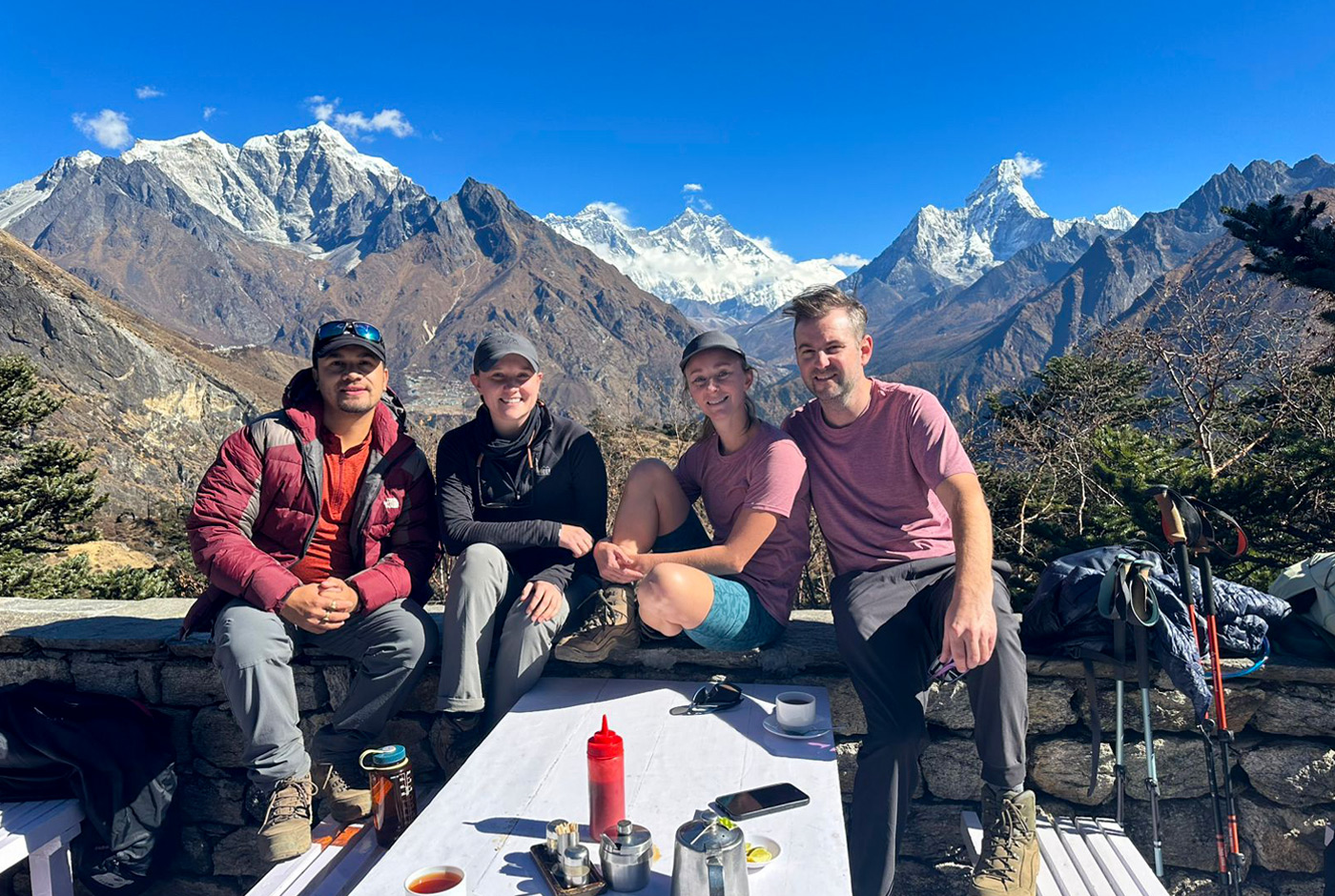
Are you short on time but want to witness the view of mighty Mount Everest? The Everest View Trek is one of the most popular. The journey comprises an ethereal trekking experience in the Khumbu area, with each day offering an exciting, joyful and completely unique experience. Infact, Everest Panorama Trek is a full package offering a complete Mountain magnificence experience in a few days.
Best Features
- Panoramic views of stunning peaks such as Mount Everest, Lhotse, Nuptse, and Ama Dablam.
- Visit Hotel Everest View (3,880) - highest-placed hotel in the world.
- Learn about Sherpa traditions and culture, arts, and ancient images.
Langtang Gosainkunda Trek
Where rugged paths lead to sacred mountain waters | Langtang Region, Nepal | Duration: 10-16 Days | Moderate | Max. 5,050meters | Tea Houses | March-May/Sept-Dec.
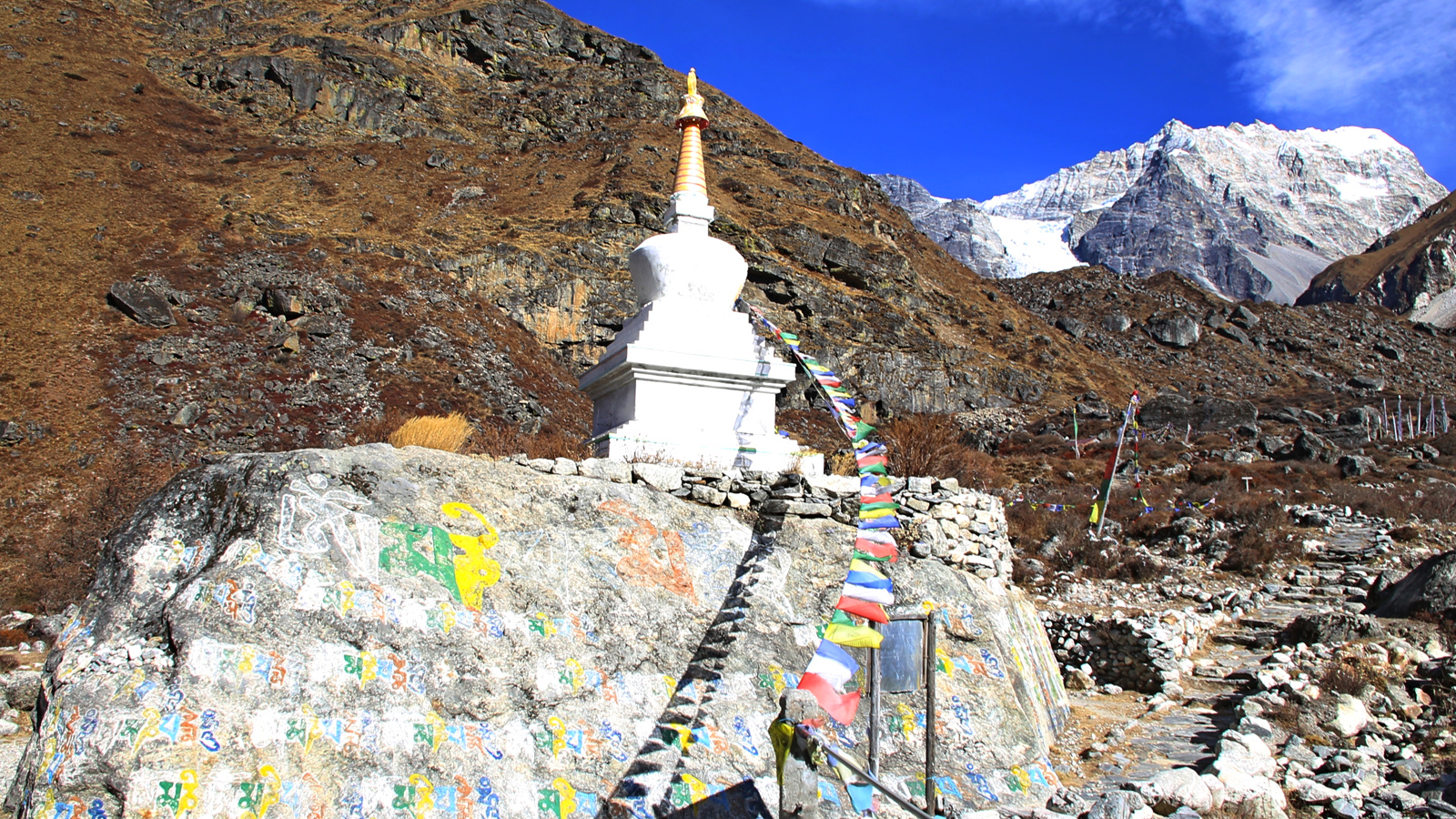
The Langtang Valley Trek with Gosainkunda is one of the relatively obscure trekking adventures in the country. The Langtang Valley trekking trail is 20km from Kathmandu, near the Tibetan border. The journey is an unforgettable hike in one of the most captivating landscapes ever, Langtang - a glacier valley.
The Langtang Valley presents trekkers with thrilling views of the Langtang Himalayas alongside the alpine villages of Rasuwa. The trekking journey also includes visiting the revered Gosainkunda Lake, which holds a special place in Hindu and Buddhist mythos. The hike goes via Langtang National Park to the country's ethereal freshwater lake, which has a distinct lake-side natural biosphere.
According to Hindu legend, Lord Shiva struck his trident into a Himalayan side, which caused lake formation. He drank water to quench his thirst by swallowing a poison that threatened to destroy the world. Travelers get company by dazzling Langtang and Ganesh Himal views throughout their journey.
Best Highlights
- The mountain landscape includes panoramic views of Langtang Lirung along with Dorje Lakpa Ganesh Himal and Langshisa Ri rising above untouched valleys.
- Religious Gosaikunda Lakes incorporates the sacred site of Gosaikunda (4,380m), which Hindu and Buddhist followers regard as holy because it lies within a zone of rugged alpine wilderness.
- Travelers can visit Tamang Heritage & Tibetan Culture destinations to walk through Tibetan Buddhist rural communities that preserve historical monasteries alongside spinning prayer wheels and grand mani walls.
- Travel to Kyanjin Gompa (3,870m) monastery and marvel at the magnificent glacier-formed scenery of Langtang Valley, which many consider the most beautiful valley in Nepal.
- Walk among the various land terrains while enjoying rhododendron wildflowers in spring that adorn the forests of rhododendron in this region.
Gokyo Lake Trek
Where the mountains touch the sky, and lakes hold the whispers of the wind | Gokyo Lakes, Nepal | Duration: 14 Days | Moderate | Max. 5,360 meters | Teahouses | March-May/Sept-Dec.
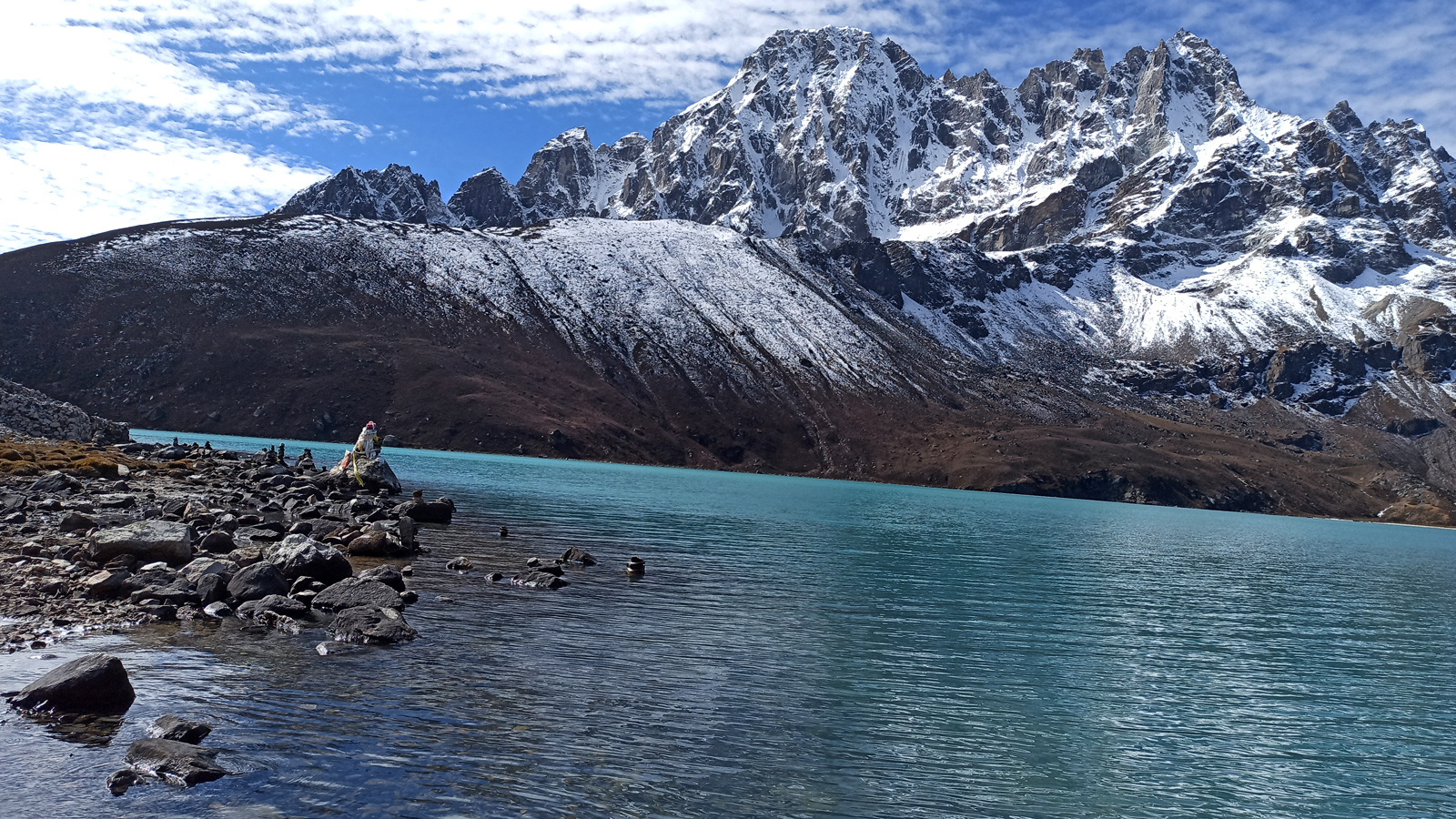
The Gokyo Lake Trek is among Nepal's best treks because it involves visiting the Everest region's sapphire Himalayan lake, Gokyo. Pilgrims from all over the country come here to celebrate the Janai Poornima festival at the holy lakes. The trekking journey traverses the Khumbu's river valleys to the Himalayan Lake. The hike to Gokyo Ri represents some of the best mountain views and the azure lakes of Gokyo Valley.
The Gokyo Lakes also hold religious significance to the Hindu people. According to Hindu mythology, they were the abode of the Nagas—the snake Gods—who used to live in the Himalayan turquoise water. It is best to visit during the autumn and spring as the lake tends to freeze over during the winter. Moreover, the trek also involves visiting the vantage point of Gokyo Ri, which presents a fantastic view of Everest and its flanking Himalayan peaks.
Top Features
- Experience a thrilling flight into the most dramatic airport and enter the vast Sagarmatha National Park.
- The trip leads to 6 glacial lakes, some of the world’s highest freshwater lakes.
- Climb Gokyo Ri, a small peak that overlooks the Gokyo Lakes.
- Get an astonishing 360-degree view of the Himalayas and Everest Massif.
Makalu Base Camp Trek
Where wild rivers carve paths, and peaks touch the sky | Makalu Base Camp, Nepal | Duration: 20 Days | Strenuous | Max. 5,700 meters | Teahouses | March-May/Sept-Nov.
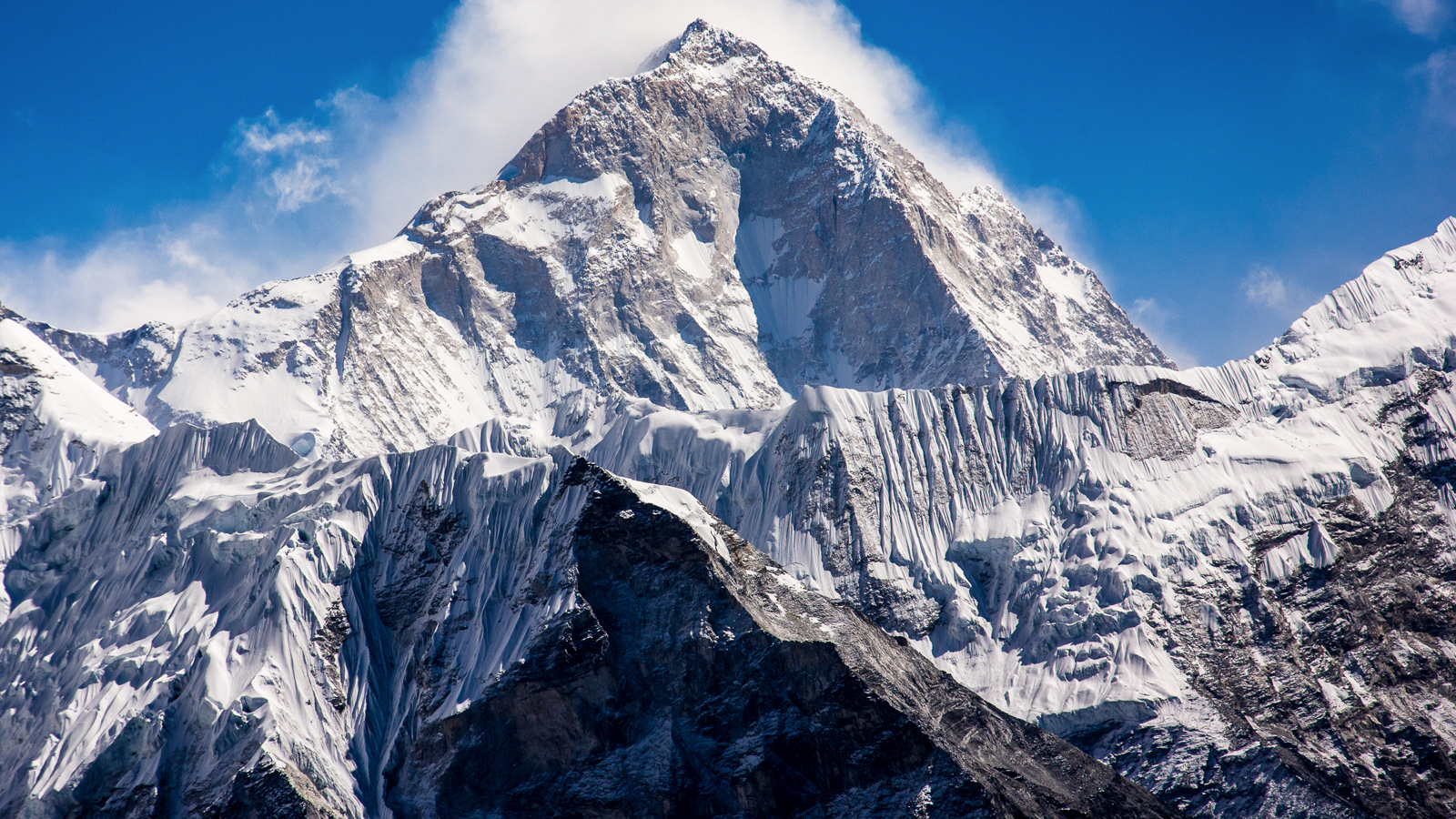
The Makalu Base Camp Trek is a coruscating journey through the enchanting Makalu Barun Valley of Nepal's Sankhuwasabha district to the base camp of the Makalu Peak- the 5th highest mountain peak. It is among the best Nepal treks because of its unparalleled natural beauty and pulchritude.
The trekking journey also involves traversing one of the seven Beyuls of the Himalayas. According to Buddhist legends, "Beyuls" are mystical, evergreen places where people do not age. Life is said to prevail only in those seven places and times of global destruction. One of them is mentioned to be somewhere in the Makalu Barun region. The valley's biodiversity offers visitors tremendously varied flora and fauna while trekking.
Key Highlights:
- Spectacular views of Mount Makalu, the world’s fifth-highest peak at 8,485 meters (27,838 feet).
- The stunning landscapes of Makalu Barun National Park feature deep valleys and towering peaks.
- Cultural encounters in traditional Sherpa, Rai, and Limbu villages like Num and Makalu Base Camp.
- Unique wildlife sightings, including red pandas, snow leopards, and Himalayan tahr.
- Strenuous trekking, ideal for experienced trekkers seeking adventure in remote areas.
- Less crowded trails offer solitude compared to popular treks like Everest.
Kanchenjunga Base Camp Trek
Leave Your Footprint, But Take Only Memories | Eastern Part of Nepal | Duration: 22 Days | Strenuous | Max Elevation: 5,142m | Teahouses | March-May & Sept-Nov
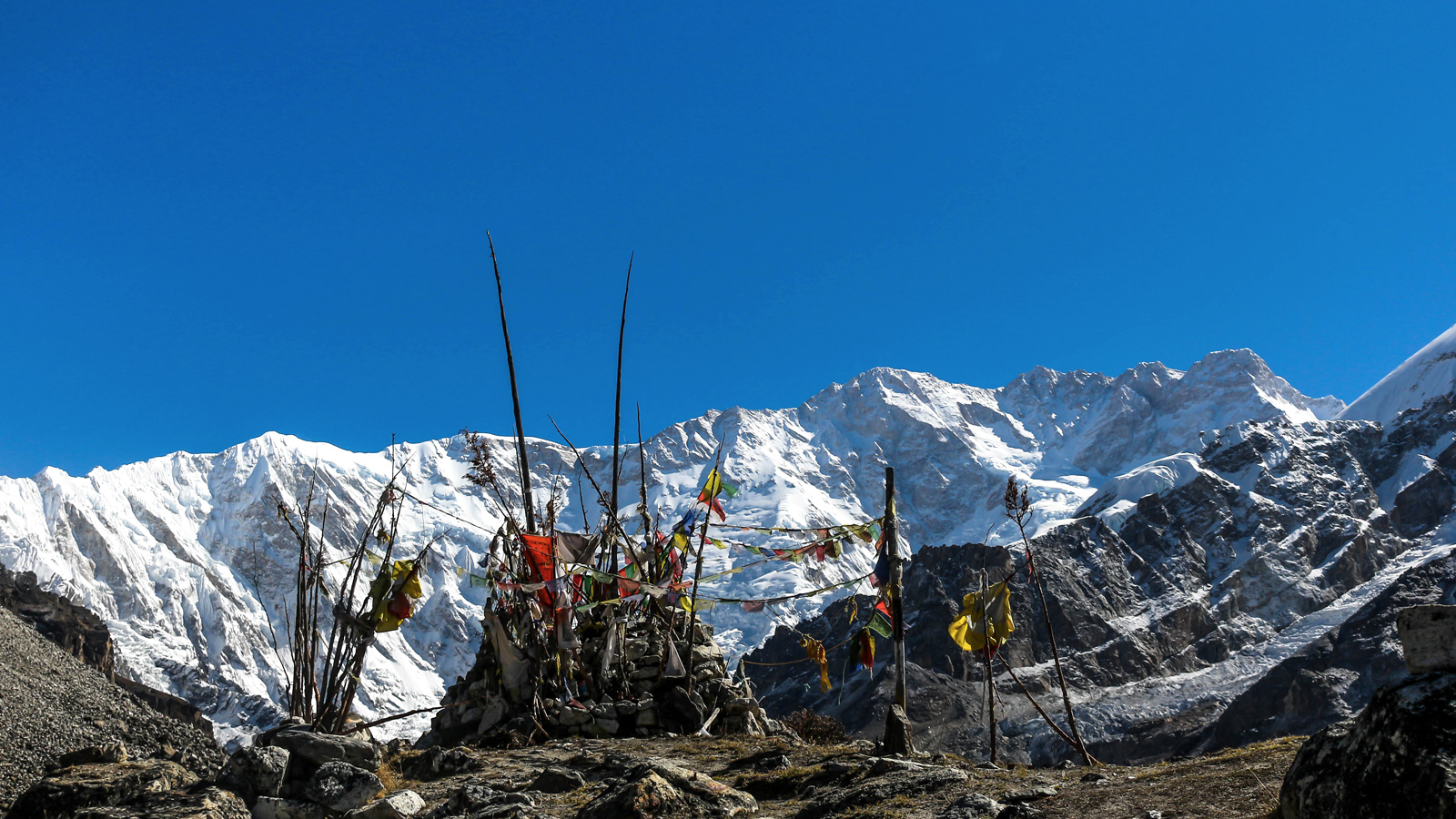
Kanchenjunga Base Camp Trek is one of the best off-beaten-path treks in a remote area of the Nepal-India border. The trip presents majestic Kanchenjunga (8,586m), the third-highest peak. Indeed, the Kanchenjunga Valley is a daring area that has yet to see changes in modernization.
Regardless, the trek perfectly combines natural wonders and a rustic cultural tenor. It is an authentic trekking experience through the Tamur River Valley in Nepal's Taplejung District. The peak also holds a special place in Buddhist legends as per their scriptures. Kanchenjunga, meaning 'The Five Treasures of The High Snow,' is derived from the Tibetan word. The treasures comprise salt, gold, turquoise, precious stones, sacred scriptures, invincible armor or ammunition, grain, and medicine. Trekkers pass through perplexing natural terrains of the Kanchenjunga Conservation Area.
Best Features:
- Witness splendid sunrise views.
- Challenging off-the-beaten-track.
- Encounter rare animals like snow leopards, Himalayan Black bears, red pandas, and musk deer.
- Interact with the Rai and Limbu community.
Pikey Peak Trekking
Whose peak this is, I think I know, rising where the cold winds blow | Duration: 5-9 Days | Moderate | Max 4,302m | Teahouses | March-May & Sept-Dec

The Pikey Peak Trek is one of the most astonishing unique and scheduled off-the-beaten-track in the Solukhumbu district of Nepal. The interesting remote trail to its summit is filled with relatively pure, peaceful, and pristine natural scenery and mountainous surroundings. It acts as the most popular alternate route through the Everest region. Even though recently opened, it has gained popularity among trekkers due to less traffic congestion, spiritual experience, and beginner-friendly.
Best Features:
- Sunrise and Sunset views of snow-capped peaks from Pikey Peak.
- Observe gompas, stupas, and monasteries of the Khumbu region.
- Experience several Sherpa hamlets, where you can learn about the Tibetan Sherpa Culture.
Trekking in Nepal: All your questions answered
What is the best time to trek in Nepal?
In Nepal, September to December is considered the autumnal season. The days are warm, and the sky is apparent throughout this time. Because the weather is at its best during this time of year, thousands of trekkers choose to go trekking in Nepal.
In the same way, the spring season, which falls from March to May, is another peak season for Trekking in Nepal. The weather is warm, and it simultaneously invites the summer season. In this season, flowers fully bloom, and trails are green. In general, it offers spectacular weather in which to view the mountains.
The winter season in Nepal Trek lasts from December to February. During winter, most high-altitude trekking is impossible due to freezing weather and heavy snow covering the trail. Meanwhile, some trekkers hike in winter to accessible destinations, as the views are most beautiful when snow covers the trail. Enough preparation is the key to any winter hike in Nepal.
From June to August, we experience the monsoon season in Nepal. The monsoon rain brings landslides, which increase the chances of blocking roads and trails. Also, the clouds obscure mountain views, and nobody wants to walk for long periods while it's raining. Even though monsoon seems to be the worst trek season, certain rain-shadowed areas of Annapurna and Dhaulagiri Himalayas in the north of Nepal let travelers explore the magical semi-arid regions. However, some trekking in Nepal—such as lower-altitude routes—are possible each month of the year.
For detailed insights, check out our comprehensive guide on the best trekking season in Nepal.
What are the easy trekking destinations in Nepal?
People who want to experience trekking in Nepal without severe high-altitude challenges can choose from scenic routes rich in cultural diversity and natural beauty. The Ghorepani Poon Hill Trek offers panoramic views of Mt. Dhaulagiri and the Annapurna range.
The Langtang Valley Trek begins with a scenic drive from Kathmandu, while the Panchase Trek meanders through terraced fields and forests, passing tea houses near Phewa Lake. The Balthali Village Trek and Namo Buddha route provide serene countryside trails. Meanwhile, lower-altitude routes in the Everest region offer rewarding trekking with minimal altitude sickness risks.
If you are a beginner with no prior experience and confused with which to choose then check out the guidebook on the top 6 beginner treks in Nepal with detailed information.
What are the Top short treks in Nepal?
Individuals seeking short trekking in Nepal can also experience Nepal’s breathtaking landscapes. The Ghorepani Poon Hill Trek offers an unparalleled sunrise view over Annapurna South. The Everest Panorama Trek and Pikey Peak Trek frame the awe-inspiring grandeur of Mount Everest.
The Everest region is home to the revered Tengboche Monastery, a spiritual and scenic highlight, while the Everest Base Camp Trek remains the most iconic journey in the region. In the Annapurna region, the Short Annapurna Base Camp Trek and Mardi Himal Trek traverse alpine ridges.
With breathtaking panoramas of the Langtang Himal range, the Langtang Valley Trek is easily accessible from Kathmandu Valley. These easy treks in Nepal promise adventure amid the shadows of the highest mountain. Check out five of the most amazing hikes and tours here.
What are the popular winter trek packages in Nepal?
Those who brave Nepal’s winter terrain can witness incredible mountain views along trekking routes in the Everest and Annapurna regions. These treks are perfect during the winter season (late December to Early March).
Some of the popular options are Annapurna Panorama, Mardi Himal Trek, and Everest Panorama though short treks, ascends to higher altitudes, revealing breathtaking alpine vistas. Meanwhile, camping treks across the Annapurna Dhaulagiri region provide an unparalleled trekking experience amid dramatic peaks.
Explore our expertly curated selection of premier trails in the Top 15 Best Winter Trek Packages blog section with the pros and cons mentioned.
What are the top summer treks in Nepal?
While monsoon rains drench most trekking destinations, monsoon treks in Nepal thrive in the arid landscapes of the Upper Mustang Trek, Upper Dolpo Trek, and Nar Phu Valley Trek, untouched by heavy rainfall. The Phoksundo Lake Trek in Shey Phoksundo National Park unveils pristine wilderness. Even an Everest trek is possible in summer trekking, offering silent trails and unique perspectives. Time to Visit Nepal? Discover some of the famous Summer-Season Trekking in Nepal offered by Escape Himalaya.
What are the popular hikes from Kathmandu?
Kathmandu’s periphery offers hikers exhilarating short side trips through luscious forests, cultural landmarks, and breathtaking ridges.
The Champadevi Hike, Phulchowki Hike, and Shivapuri-Nagarjun National Park trails traverse lush terrain, while the Nagarkot Panoramic Hiking Trail, Chisapani-Nagarkot Trek, and Changunarayan Hike unveil sweeping Himalayan vistas.
For more spiritual serenity, Namo Buddha Hiking, Amitabha Monastery, and Dhulikhel-Namo Buddha Hike provide tranquil retreats. Discover nature’s grandeur through Balthali Hike, Jamacho Hiking, Kakani Hiking, and Sundarijal-Chisapani Trek.
Explore our 6 of the most amazing hikes around Kathmandu Valley.
Need Help Organizing A Trip In Nepal?
If you have queries and are looking forward to planning a Nepal trip, please don't hesitate to contact us. We'll make sure you respond quickly to all your questions and help plan an exceptional journey around the Himalayas as you prefer.






